A stepping ring is an adaptor that screws into the front of your lens to change the filter thread size. The idea is you can make one filter fit a number of lenses with different filter thread sizes by attaching a stepping ring in between the filter and the lens.
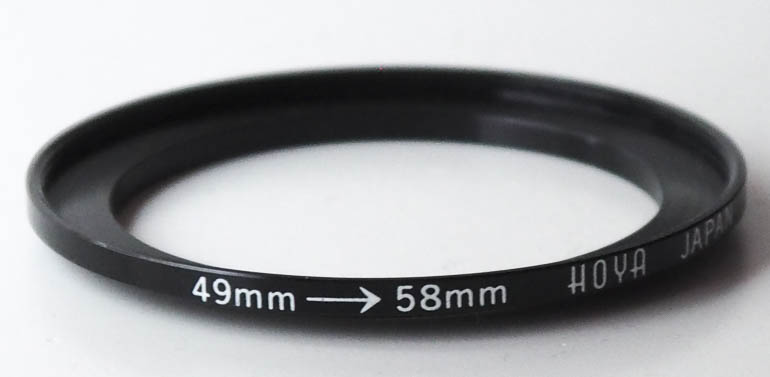
Their are always two numbers on a stepping ring. The filter thread size of the lens, and the filter thread size of the filter. They always start with the lens filter thread size first. You use a step up ring to attach a larger filter on to a lens with a smaller filter thread size And you step down to use a smaller filter on a lens with a larger thread.
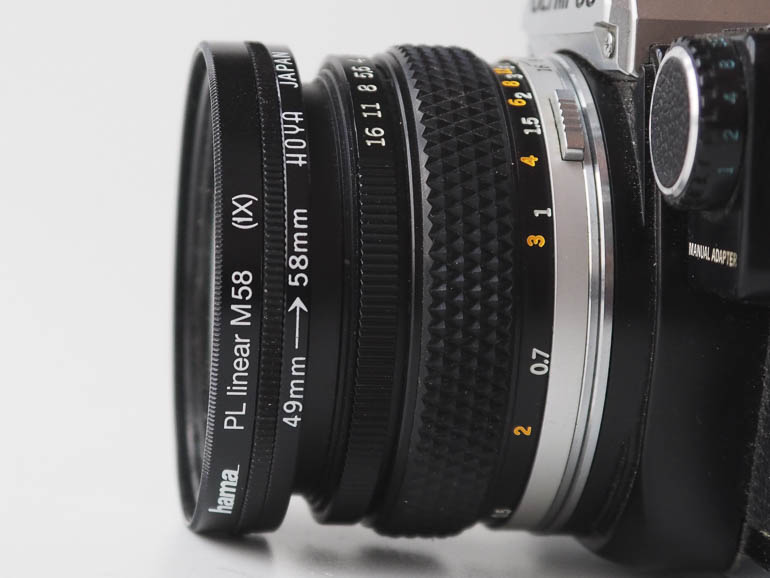
So a 49-58mm stepping ring is a step up ring and will let you screw a 58mm filter onto a lens with a 49mm thread (see pic above). While a 67-55mm stepping ring is a step down ring and will let you screw a 55mm filter onto a lens with a 67mm thread.
Generally its better to use step up filters on wide angle lenses to avoid vignetting where the smaller filter encroaches into the edges of the frame. A step down filter is better used on telephoto lenses.
Here at PhotographyAttic we have a wide range of stepping rings from a number of brands. And we’ve reduced the price so most unbranded ones are £2.00 and ones with brand name are £3.00. Buy here: Stepping Rings for sale
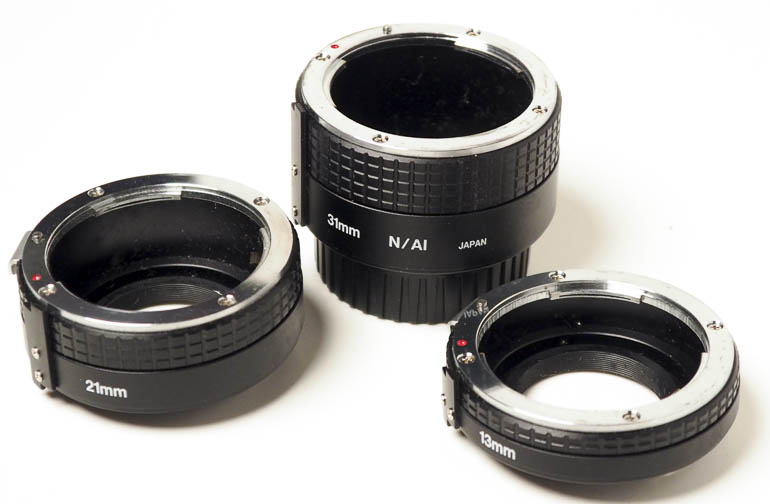
Extension tubes are tubes without any optical elements that you place between the camera and lens of an interchangeable lens camera. They extend the lens so it can focus closer, giving the lens macro capabilities. Some have full automatic couplings so the camera can continue to be used in all its auto and program exposure and focus modes. Some lower priced ones have no couplings, so the camera needs to be used in manual.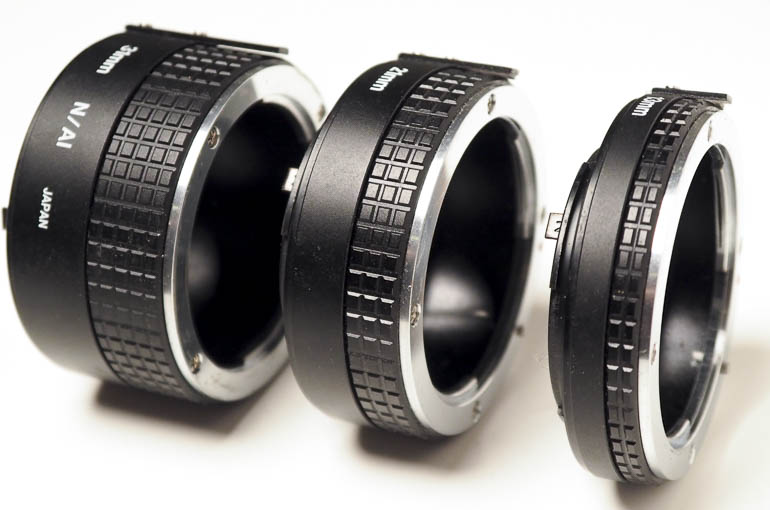
Tubes are often sold in sets of three. The set illustrated above has 13mm, 21mm and 31mm extensions, and these can be attached in any combination giving a total of seven different extensions:
- 13mm
- 21mm
- 31mm
- 34mm (13mm+21mm)
- 44mm (13mm+31mm)
- 52mm (21mm+31mm)
- 65mm (13mm+21mm+31mm)
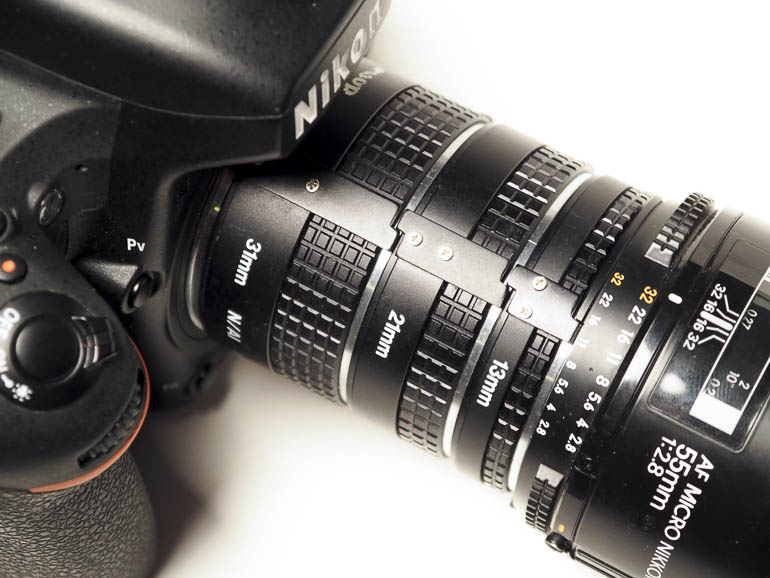
Here a set of three tubes can be seen attached to a Nikon digital SLR camera.
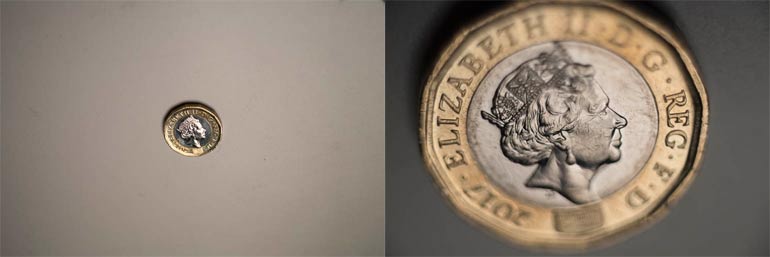 This photograph of a British one pound coin was taken using a nikon camera with a 55mm lens set to infinity and an extension tube added. The smaller coin on the left is with the 13mm and the coin on the right is with the three tubes attached giving 65mm extension. The lens was at f/2.8 to show how shallow depth of field is. When using tubes you either need to use a very small aperture or shoot the subject parallel to the CCD or film plane. Here the coin was at an angle so only a shallow strip across the centre is sharp.
This photograph of a British one pound coin was taken using a nikon camera with a 55mm lens set to infinity and an extension tube added. The smaller coin on the left is with the 13mm and the coin on the right is with the three tubes attached giving 65mm extension. The lens was at f/2.8 to show how shallow depth of field is. When using tubes you either need to use a very small aperture or shoot the subject parallel to the CCD or film plane. Here the coin was at an angle so only a shallow strip across the centre is sharp.
Advantages of using Extension Tubes
Low cost macro
No optical degradation
Compact
Disadvantages of using Extension Tubes
Limited magnification variations
Fiddly changing between magnifications
Taking lens off increases risk of dust intrusion
We have a selection of extension tubes in different camera fittings
This seems like an interesting gadget to put on a Nikon SLR and convert the Laowa 12mm into a shift lens. ideal for architecture photographers.
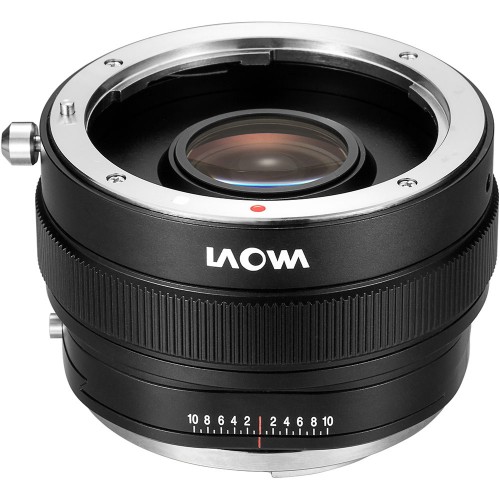
The converter is designed exclusively for Sony FE lens mount and fits on cameras with a Nikon AI mount. It has a 1.4x magnification so the 12mm lens becomes an effective 17mm focal length and has a 1-stop aperture loss
With the 360g converter in place you get a +/- 10mm Shift
Combined cost of the 12mm and shift converter is about £1170.
You can find more info from the UK distributor here Laowa lenses
An amazing selection of snowflake macro photos and a article showing how to photograph snowflakes can be found on Alexey Kljatov’s ChaoticMind blog

If you have an SLR you can reverse your lens on the body using a reverse adaptor, or reverse a lens on a lens using a coupling ring (which has filter threads on both sides), or use extension tubes, close up lenses, macro lens or bellows. We have all these available on PhotographyAttic. If you cant find what you want contact us with specific requests
The I’m Back digital back turns your 35mm film camera into a digital camera. It will work with the following cameras:
Nikon F, Nikon F2, Nikon FM, Nikon FE, Nikon S2, Canon F1, Canon A1, Canon AE1, Pentax ME super, Pentax spotomatic, Pentax K1000, Praktica b200, Praktica MTL, Contax II, Contax RTS , Contax G2, Olympus OM1, Olympus OM2, Minolta Dinaxx 7000, Olympus OM10, Yashica JP, Yashica FX3, Leica M, Leica R, Diana F, Diana F mini.
There will also be a universal accessory, that can be adjusted to almost all 35mm cameras.
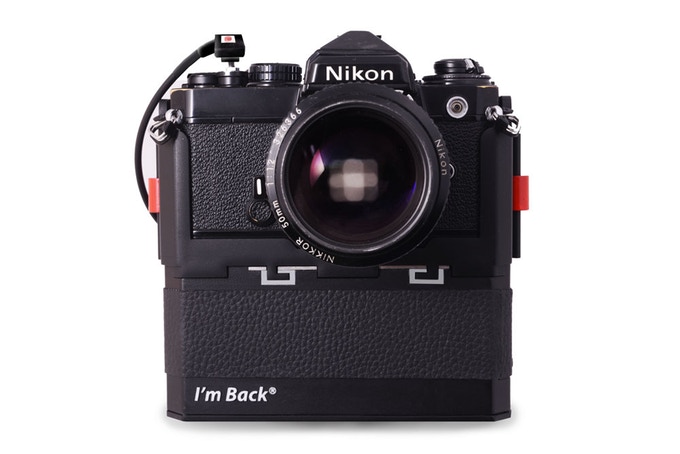
It features a 16mp Panasonic sensor and has a 2in touch screen display. Photos and videos can be transmitted through the WiFi and saved in a smartphone. You can also use the smartphone display as a bigger screen and control the camera through it.
For full details check out the Kickstarter Im Back Pro project page
Many film cameras for sale here. Second-hand 35mm Cameras for sale





 This photograph of a British one pound coin was taken using a nikon camera with a 55mm lens set to infinity and an extension tube added. The smaller coin on the left is with the 13mm and the coin on the right is with the three tubes attached giving 65mm extension. The lens was at f/2.8 to show how shallow depth of field is. When using tubes you either need to use a very small aperture or shoot the subject parallel to the CCD or film plane. Here the coin was at an angle so only a shallow strip across the centre is sharp.
This photograph of a British one pound coin was taken using a nikon camera with a 55mm lens set to infinity and an extension tube added. The smaller coin on the left is with the 13mm and the coin on the right is with the three tubes attached giving 65mm extension. The lens was at f/2.8 to show how shallow depth of field is. When using tubes you either need to use a very small aperture or shoot the subject parallel to the CCD or film plane. Here the coin was at an angle so only a shallow strip across the centre is sharp.

